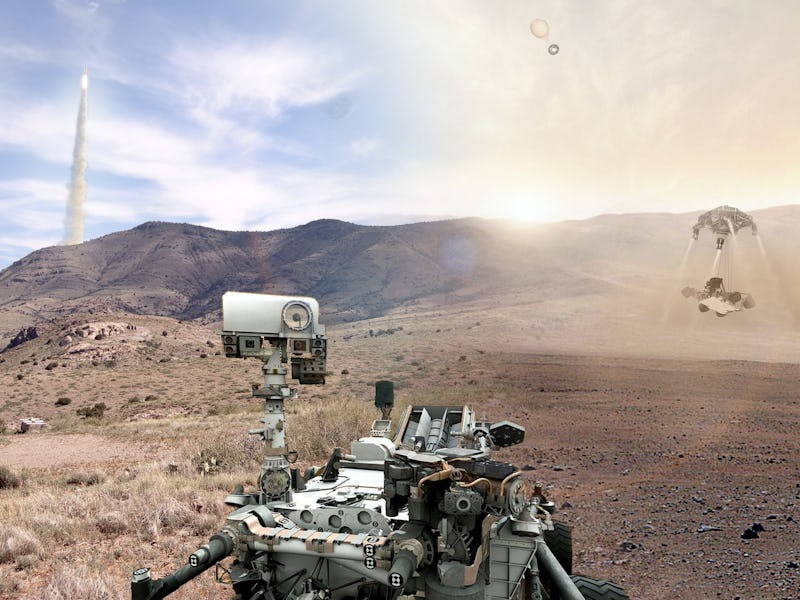NASA Thinks a Hive Mind Can Solve Mars Colony Problems Before Rocket Scientists
It takes a lot of brain power to get humans to Mars -- the more brains, the better.

A lot of very smart people work at NASA. Many of them are literally rocket scientists. And yet, despite employing some of the top brains in America, NASA regularly asks civilians for help with its most complicated problems. Part of the reason for this is financial. NASA has a $19 billion dollar budget, but it gets eaten up quickly by long-term projects like, say, sending humans to Mars. Limited resources means that the space agency has to budget intelligently. When NASA needs solutions at a discount, they call NineSigma, a company that crowdsources innovation initiatives.
“You can’t employ every technical mind on the planet,” Kevin Andrews, senior program manager with NineSigma, points out.
Andrews recently managed NASA’s in-situ materials challenge, a call for new extraterrestrial infrastructure proposals involving space rocks and dust. The nature of the problem is highly technical, and yet somehow also very well suited to the innovation-by-public-competition model.
“It doesn’t really hit you until you think about it for a moment — the impact of the cost of delivery of any material or machinery from our planet to Mars,” says Andrews. For every pound of Mars rock that NASA can figure how to use, the agency saves $50,000 in transportation and fuel costs that would otherwise have to spend shipping material from Earth. That’s a pretty big incentive.
Home sweet home?
But we can’t build on Mars like we build on Earth, either. “Here on Earth we take the materials in cement and mix it with some crushed stone and water and make this thick slurry paste that we call concrete — Then we can use that to make various structures,” says Andrews. “The challenge on Mars, in particular, is that while water has been observed there, it’s not present everywhere and maybe not present in areas where you would want to put a landing site. So the way of binding the materials couldn’t involve a water-based chemistry like what we use here on Earth.”
The public competition netted about 50 proposals, says Andrews, and about half of those were sufficiently technical to merit NASA’s close attention. If even one idea leads to just a tiny increase in the efficiency of building infrastructure on Mars, it could save NASA millions in the long run. The cost to NASA for running the competition was just $15,000 in prize money plus the expenses related to managing the contest.
But it’s not only about value for money — there’s good evidence that highly trained specialists are not always better at solving complicated problems compared with people who come from diverse backgrounds.
“The benefit is to ask for creative minds everywhere to consider the problem,” says Andrews. “It’s fresh perspective. Sometimes when you’re working on a problem, that you maybe have been working on for a long time, you get what we might call tunnel vision — or you essentially wear blinders, where you’re focused so intently on a particular path that maybe you’re not stopping to take a look around.”
Highly technical expertise is great for a lot of things, but it can limit the approach you take to new problems. If you take a bunch of people, and pick a group of them at random, and pick another group made up of only the top problem solvers, the first group is going to be better than the second group at solving complicated problems. It sounds insane but the research backs it up — coming at a problem from lots of different angles beats coming at it strongly from one angle. Scientists are designing robots and computer programs to take advantage of this fact, hoping that random chance will stumble upon potential solutions that highly trained experts would never have guessed might work.
All of this helps to explain how a South Carolina blacksmith, with no prior training in space research or materials science, won a recent NASA competition to design a system for testing space suits to make sure they are able to protect astronauts from harsh outer space conditions.
Rocket scientists might know how to build, well, rockets, but to build a new human civilization on Mars, it’s going to take humans.